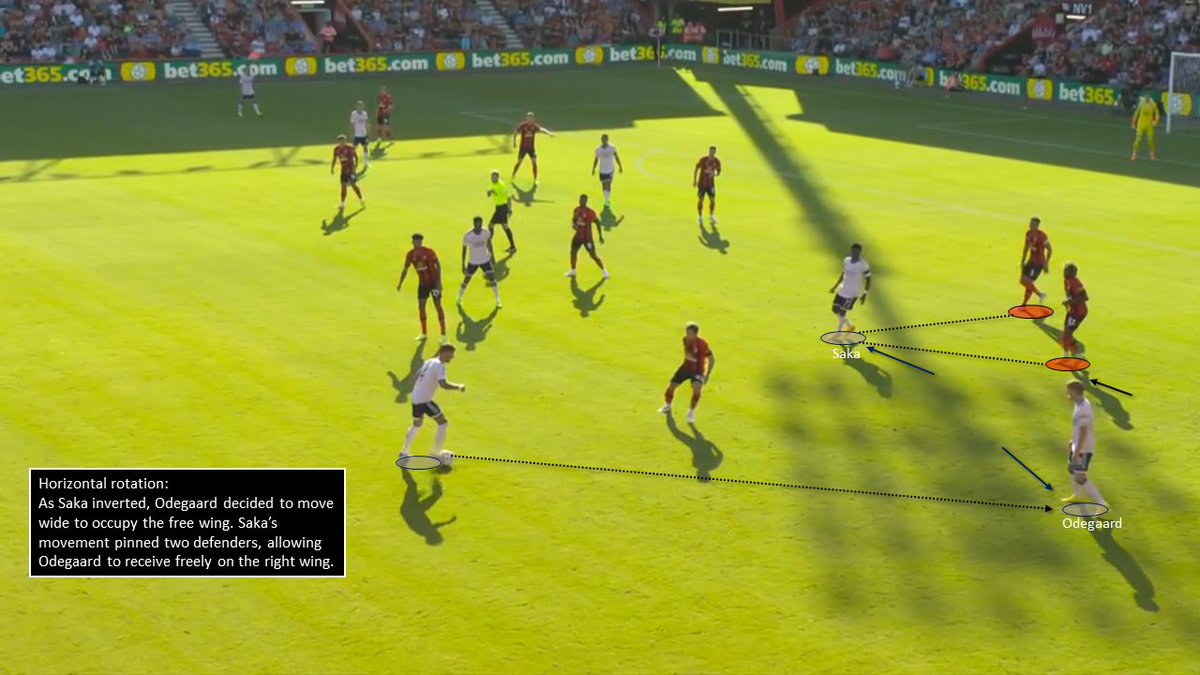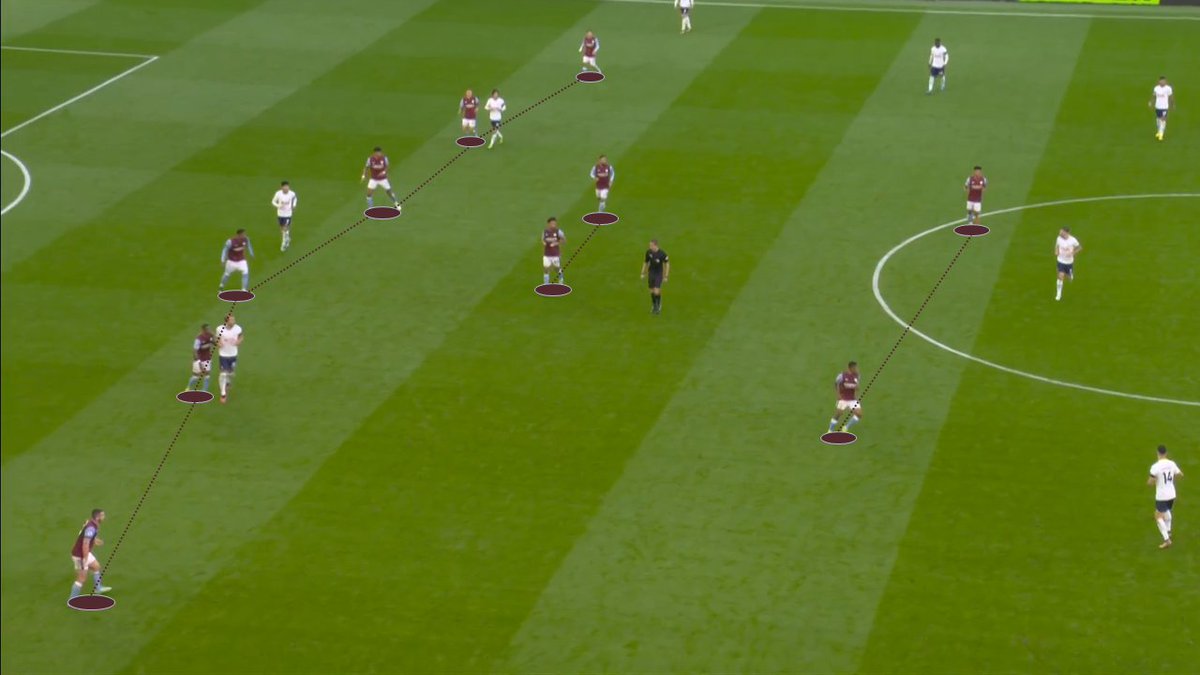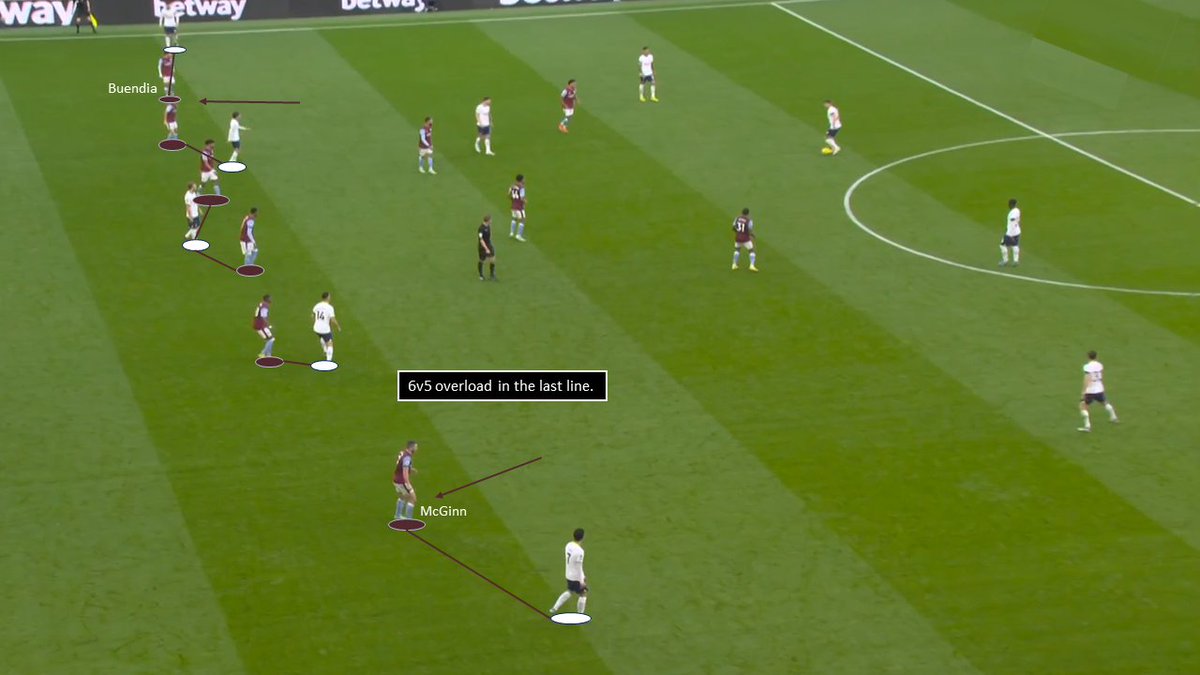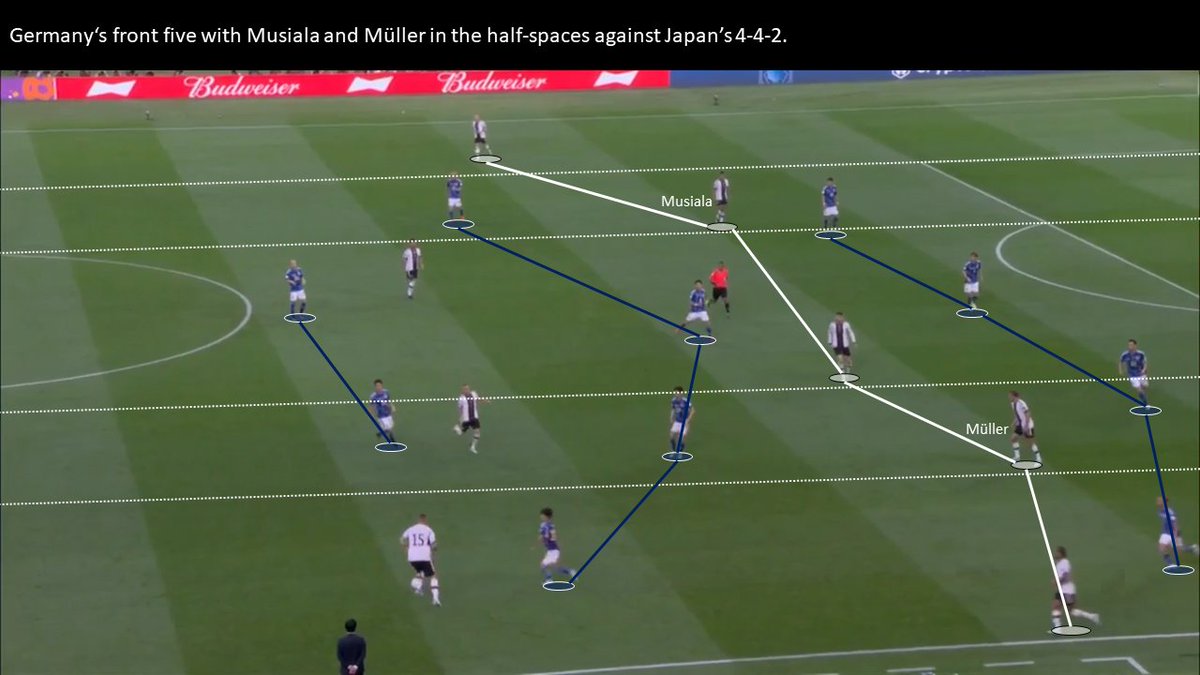
Team Analysis: Arsenal’s various attacking mechanisms [THREAD]
The Gunners are flying under Mikel #Arteta this season, currently ranking 1st in the Premier League. A key component of their success are the different chance creation methods, which will be analysed in this thread.



The Gunners are flying under Mikel #Arteta this season, currently ranking 1st in the Premier League. A key component of their success are the different chance creation methods, which will be analysed in this thread.




Dynamical space occupation and rotations:
Rather than simply occupying spaces, the forwards aim to dynamically arrive at specific areas, making them harder to mark. Furthermore, the Gunners would at times purposefully leave spaces unoccupied to then move into them quickly.



Rather than simply occupying spaces, the forwards aim to dynamically arrive at specific areas, making them harder to mark. Furthermore, the Gunners would at times purposefully leave spaces unoccupied to then move into them quickly.




Moreover, they use different kinds of rotations, which can cause a dilemma for the opposition and might end up in the creation of a free man or the generation of space. 







Quick combinations:
To get in behind, Arsenal would regularly combine their way through (using patterns such as one-twos, 3rd man combinations and up-back-throughs).



To get in behind, Arsenal would regularly combine their way through (using patterns such as one-twos, 3rd man combinations and up-back-throughs).




Runs in behind:
We would continuously see the Arsenal forwards making runs in behind, which can either provide a passing option or the movement acts as a decoy (e.g.: dragging an opponent out of position).



We would continuously see the Arsenal forwards making runs in behind, which can either provide a passing option or the movement acts as a decoy (e.g.: dragging an opponent out of position).




Every movement is important, as it forces the opponent to react to it and the more a team can challenge the opponent with different kinds of movements, the more mistakes he will make sooner or later.
The usage of the FBs:
Arsenal’s FBs are essential when attacking, as they regularly provide over-/underlaps, which can support the winger (either as a passing option or as a decoy). The FBs can act as relay players as well at times, enabling Arsenal to get out of tight zones.



Arsenal’s FBs are essential when attacking, as they regularly provide over-/underlaps, which can support the winger (either as a passing option or as a decoy). The FBs can act as relay players as well at times, enabling Arsenal to get out of tight zones.




Qualitative superiority:
Arsenal has some outstanding dribblers with Saka and Martinelli, who shine in 1v1 situations and are able to generate chances out of nothing. The Gunners therefore regularly seek to isolate their wingers in these 1v1s.



Arsenal has some outstanding dribblers with Saka and Martinelli, who shine in 1v1 situations and are able to generate chances out of nothing. The Gunners therefore regularly seek to isolate their wingers in these 1v1s.




Switches:
A possibility to generate these 1v1s (or even 2v1s) is the usage of switches. Arsenal regularly aims to lure the opponent towards one side before switching to the other one (preferably through short passes and through the block).



A possibility to generate these 1v1s (or even 2v1s) is the usage of switches. Arsenal regularly aims to lure the opponent towards one side before switching to the other one (preferably through short passes and through the block).




Chip in behind:
Instead of going through or around the opposition’s block, the Gunners are capable of going over it as well by using surprising chips.



Instead of going through or around the opposition’s block, the Gunners are capable of going over it as well by using surprising chips.




Crosses:
After getting in behind and the ball-carrier isn’t able to shoot, he would search for a better-positioned player (preferably through cutbacks or low crosses). However, high crosses from the half-space using the concept of the relay player aren’t uncommon either.



After getting in behind and the ball-carrier isn’t able to shoot, he would search for a better-positioned player (preferably through cutbacks or low crosses). However, high crosses from the half-space using the concept of the relay player aren’t uncommon either.




• • •
Missing some Tweet in this thread? You can try to
force a refresh

























































